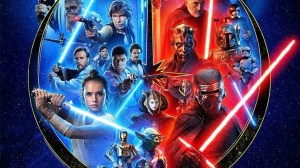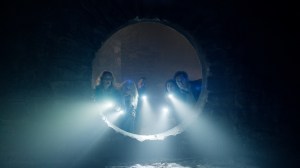Marvel fans will be assembling their Avengers (and other Marvel superheroes and villains) in more ways than one in Marvel: Crisis Protocol. The new tabletop miniatures game, which was created by Atomic Mass Games and due out later this year, blends the action and drama of superhero comics with the DIY spirit and strategy of tabletop skirmish games. But how can a tabletop game attempt to capture over 80 years of high-powered characters and storylines in a way that appeals to the many fans of the Marvel Universe and those looking for a deep strategy tabletop game? “You got to start from the top and then you work your way down,” Atomic Mass Games Head of Studio Will Shick told ComicBook.com during a phone interview. “The big thing was to really think about what are the iconic moments? What are the iconic storylines or the iconic characters?”
Videos by ComicBook.com
While most popular tabletop games (such as Warhammer 40,000 or Star Wars: Legion) involve building large armies and then pitting them against opponents, Marvel: Crisis Protocol focuses on smaller squads of heroes and villains handpicked by players after determining a scenario and laying out the field of play. Scenarios were inspired by popular Marvel storylines, which acknowledges the wide history and impact of the Marvel Universe, while keeping the game accessible for those who either haven’t read the comics or want to focus on the game’s strategy aspects.
Each character in Marvel: Crisis Protocol has their own stats and set of superpowers, some of which are fueled by “Power,” a resource that is slowly built up over the course of the game. A critical part of the game is choosing when to unleash a character’s most powerful attacks, leading to explosive moments in the game. “You have to generate this Power in order to build up super big attacks, in order to lead to this big exciting moment, Shick said. “I really liked the interplay of how it really increases the excitement and the intensity of the games’ experience. But also, when you get to do your big thing, both you and your opponent have this level of excitement about ‘Oh my God, look what he just did! That’s incredible!’”
The Marvel: Crisis Protocol Core Set contains popular heroes like Captain America, Spider-Man, and Captain Marvel, as well as iconic villains like Red Skull and Doctor Octopus. However, the game designers seem keen to dig into Marvel’s deep portfolio of characters and aren’t looking to stick with popular characters from the comics and movies. Crossbones is included in the Core Set as a punishing front-line bruiser and M.O.D.O.K. is planned as one of the game’s first expansions. When choosing what characters to include, the design team focused on picking out iconic Marvel characters that gave players the freedom to make tactical and strategic choices when building out their roster.
[Start Gallery Call-to-Action Key=7789]
One thing I was curious about when talking to the Marvel: Crisis Protocol team was how the designers decided what powers each characters would have. For instance, Spider-Man has super-strength, agility, web shooters, and his Spider-Sense, along with plenty of other abilities that could be combined in intriguing combos. Shick told ComicBook.com that they’ll envision a role for a particular character and toss the character to Senior Lead Developer Will Pagani to develop the character to fit into the rules of the game.
“We wanted Spider-Man to be a very mobile, harassing unit that has some manipulation effects in terms of pulling enemies or maybe throwing terrain,” Shick said. “So we’re going to play up that kind of harassing webhead side where he’s bouncing around everywhere and he’s causing problems but he’s not necessarily in the middle of the action.”
“We have to pick and choose abilities,” Pagani noted. “And sometimes we end up being like ‘Oh, well we have enough for three characters here.’” Both Pagani and chick hinted that multiple versions of the same character could be added to Marvel: Crisis Protocol in the future, so that players can choose which abilities they want these versatile characters to use. We’ll also see related characters eventually appear in Marvel: Crisis Protocol, so a player who might not like Spider-Man’s powerset in the game could opt for Ghost-Spider or Miles Morales instead.
It’s clear that Marvel: Crisis Protocol was born out of a deep love of the Marvel Universe, one that comes from a lifetime of reading comics and devouring Marvel movies and TV shows. The designers gushed about the chance of getting to put a spotlight on characters like Crossbones and Black Widow, and teasing about finding a way to bring in more obscure characters like the Sentry into the game. “Ever since we started to work on this game, I have constantly struggled with the question of how do you do the Sentry,” Schick mentioned. “And then how does he become the Void and what does that mean? I haven’t cracked that nut yet but I’m going to and I hope it’s going to be amazing.”
A standard skirmish should take about 90 minutes to complete, or even less time if players already have their battlefield set up and are familiar with the game. While Marvel: Crisis Protocol will initially only have a skirmish mode, the developers plan to add alternative play modes including an extended campaign mode and a raid mode featuring a unique 2v1 co-op style of play. This is also a living game, so monthly expansions are planned that will add heroes and villains from every corner of the Marvel Universe.
Marvel: Crisis Protocol will be released later this year. Look for the Core Set, as well as terrain sets and individual expansions, at local board game stores later this year.








